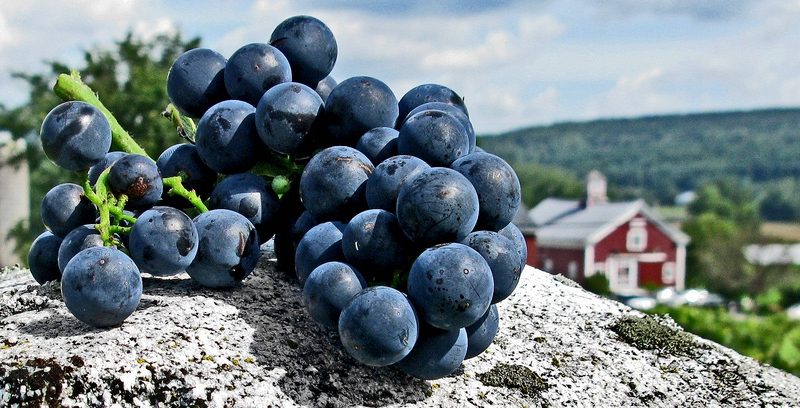8 Vermont Vineyards To Visit This Summer
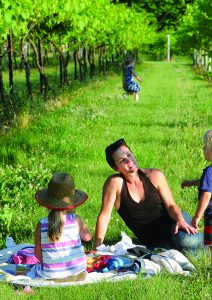 It’s 6 p.m. on a Friday. You’re sitting in a vineyard on the flanks of the Green Mountains, watching the sun lazily inch behind the Adirondacks. A food truck serves plates of glazed salmon and local kale salad, and you just ran into four of your friends while waiting in line to order. A band plays bluesy tunes for a crowd that includes both stomping toddlers and twirling septuagenarians. Behind you lie acres upon acres of the vines that produce the nectars you’ve been tasting by the glass.
It’s 6 p.m. on a Friday. You’re sitting in a vineyard on the flanks of the Green Mountains, watching the sun lazily inch behind the Adirondacks. A food truck serves plates of glazed salmon and local kale salad, and you just ran into four of your friends while waiting in line to order. A band plays bluesy tunes for a crowd that includes both stomping toddlers and twirling septuagenarians. Behind you lie acres upon acres of the vines that produce the nectars you’ve been tasting by the glass.
Vermont may be home to some of the top breweries in the world, but lately a growing number of vintners are saying “hey, us too!” The state’s climate may veer from the romanticized Mediterranean climate that favors California’s wineries, but viticulturists have figured out how to produce refreshing and deeply flavorful wines from the grapes that mature in the long days of a Vermont summer.
Now that there are about 20 registered vineyards (and more on the way), it seems fair to raise the question: could Vermont earn a reputation for cold-weather wines, similar to that of the Finger Lakes region of upstate New York?
For a long time, Vermont’s chilly climate was inhospitable to growing grapes, and wines were made in a mead-style from fruits like apples. Then, with the help of Minnesota Hardy, the University of Minnesota’s fruit research department, Vermont winemakers discovered hybrid grapes. Delicate vinifera varieties, used to make all the well-known European wines, were bred with hardier, cold-resistant grapes native to North America, creating fruit that could produce well-balanced and complex flavors while still surviving the winter.
“It’s been a learning process,” said Ken Albert, co-owner of Shelburne Vineyard, which was established in 1998. “At first, we didn’t plant grapes that were super hardy, because the Minnesota grapes weren’t readily available. When we learned about the Minnesota hybrids, we ripped up the old vines and ran with the hybrids. And then we started learning about the challenges of making wine with these grapes instead of the standard European grapes. I think we’re finally getting there.”
The Minnesota hybrids used by most Vermont vineyards sport names unfamiliar to many wine lovers. Marquette grapes are related to pinot noir, with notes of cherry, black pepper and spice. La Crescent grapes are hardy, easily surviving harsh, sub-zero temperatures, and they give a refreshing peach and citrus taste. The Frontenac grape is the offspring of an American grape and a French hybrid. It lends distinctive blackberry, black currant and plum flavors.
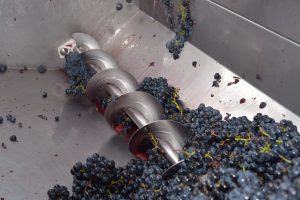
Grapes at Boyden Valley Winery in Cambridge
In the 1990s, winemakers began to establish these vines and cultivate new hybrids in the Green Mountains. Now, Vermont is starting to see a wine culture grow alongside its craft beverage scene. And though cold climate wines are distinctly different from traditional European wines, the quality is improving rapidly, according to Todd Trzaskos, wine correspondent for the New York Cork Report and author of the 2015 book Wines of Vermont: A History of Pioneer Fermentation.
“I don’t believe that any of these wines should be compared to traditional ones, in either aromatic or taste profile,” he said. “A number of professionals, masters of wine and master sommeliers see these wines as an exciting and completely new frontier that, in many cases, breaks the rules of what people have previously known. Vermont cold climate wines are leading the new industry in quality, for sure.”
Deirdre Heekin, co-owner of La Garagista, grows hybrid grapes on a hillside in Barnard, Vt. Formerly the owner of Osteria Pane e Salute, a small restaurant in Woodstock, Heekin and her husband, Caleb Barber, recently closed shop to focus exclusively on making wine.
In 2015, La Garagista wines won praise from The New York Times wine critic Eric Asimov. “Though it’s not exactly her intention,” Asimov writes, “Ms. Heekin and her La Garagista wines demonstrate that wines made of hybrid grapes can not only be deliciously satisfying but can also show a sense of place.”
And the Vermont Fresh Network, an organization that works to advance relationships among the state’s farmers, chefs and consumers, is pushing Vermont wines into the state’s renowned restaurant scene. A new grant from the USDA’s Specialty Crops Block Grant Program, administered by the Vermont Agency of Agriculture, funds the Vermont Wine Project. In partnership with the Vermont Grape and Wine Council, VFN plans to host forums that will bring Vermont winemakers, grape growers, distributors, front of the house workers and kitchen staff together to talk about Vermont wine.
Just how good are Vermont wines? For the first time this summer, there will be a new wine competition that may help answer that. On July 8, Brook Farm Vineyards in the Okemo Valley will host a showdown of sorts for Vermont winemakers: the first annual Vermont Governor’s Cup Wine Competition. A selection of the region’s top restaurateurs, sommeliers, retail wine buyers, critics and distributors will act as the judging panel in a blind tasting, with the top wine winning the ceremonial Governor’s Cup. Visitors are invited to an all-day public tasting.
If you miss that, major ski areas are hosting increasingly elaborate wine festivals, where you can often taste the best of Vermont along with wines from around the world.
The Killington Wine Festival features grand tastings, wine dinners and a wine trail that takes visitors to local establishments for wine and local food pairings (July 14-16). The 500 featured wines come from more than 40 world-class vineyards. From June 21 to 24, the Burlington Wine and Food Festival boasts a busy lineup of events that take visitors on a tour through some of Vermont’s best restaurants, with pairings along the way. At the Stowe Wine & Food Classic (August 25-27), you can taste wines from around the world along with local food and brews. Fall brings the Vermont Wine and Harvest Festival (Sept. 22-24) to Mount Snow, with 15 of Vermont’s vineyards and spirit distillers, tastings, dinners, wine parties, break- fasts and live entertainment.
But Vermont locals don’t need a special occasion. For many, picnicking on the lawn of a vineyard has become a standard Friday night summer activity. Wineries can now be found in almost every corner of the state. Many host pop-ups, weekly concerts, tastings and parties, allowing you to experience this new Vermont culture for yourself.
Here’s our guide to a few favorite vineyards you can visit.
BOYDEN VALLEY WINERY + SPIRITS, CAMBRIDGE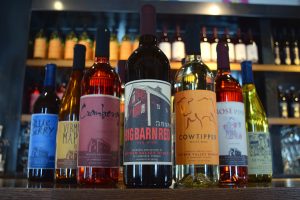
One of the pioneering Vermont wineries, The Boyden Winery was built on fourth-generation farm land. This May 27-28, Boyden invited locals and visitors to celebrate its 20th anniversary with the release of its new Marquette Reserve (vintage 2015) available for purchase by the glass and by the case. The wine, which marks the winery’s first official vintage, will be available only at the vineyard in limited quantities.
At Boyden’s Cambridge farm and tasting room, pair a selection of local cheese or chocolates with your wine. On Saturdays, try one of the house-made sangrias (different each week) while lounging on the patio. For an adventure, paddle down the Lamoille River with Vermont Canoe and Kayak.
Wine, cheese and freshly baked bread are provided on the trip. And if you’re in Waterbury, head to Boyden’s second tasting room, where you can taste seven wines for $10. | BE SURE TO TRY: The Big Barn Red. boydenvalley.com
BROOK FARM VINEYARDS, PROCTORSVILLE
On a 45-acre estate in the Okemo Valley sits a 120-year-old, 10,000-square-foot Georgian Revival mansion that’s on the National Historic Trust. It’s also the home and summer tasting room for boutique winery Brook Farm Vineyards. Douglas and Jennifer McBride bought the estate in 2008, and each summer they invite visitors to explore its gardens, stone walls and mountain views, or to relax on the patio while tasting wines, cheeses and charcuterie. Brook Farm also has a year-round tasting room in downtown Ludlow, Circa 1810. Inspired by the great room of the estate’s mansion, the tasting room features a 48-square-foot mirror and furniture that will make you feel like you’re on the set of Downton Abbey. | BE SURE TO TRY: Petite Pearl. brookfarmvineyards.com
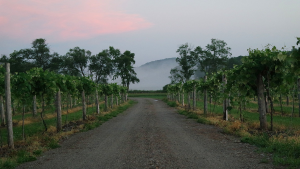
Brook Farm Vineyards
FRESH TRACKS FARM, MONTPELIER
On Friday nights, the tasting room at Fresh Tracks is hopping until dark. Starting May 19, they host the monthly series Friday Night Fires, where you can grab a slice of wood-fired pizza, a glass of Little Piggy Pink rosé and gather around fire pits while listening to local bands play live.
Fresh Tracks’ winemaker and proprietor Christina Castegren began making wine in 2002, and the vineyard’s first official vintages debuted in 2006. Now, as their wines catch on, the vineyard is planning to expand. Visit the distinctive post-and-beam tasting room, complete with tables, chairs and a wine bar, and order cheese or charcuterie plates. | BE SURE TO TRY: The Little Piggy Pink. freshtracksfarm.com
HONORA, WEST HALIFAX
Twenty minutes south of Mount Snow lies Honora Winery, a 200-acre farm dotted with gazebos, trellises and stone patios with panoramic views of the Green Mountains. The 11-acre vineyard grows 10,000 vines with cold-hardy varieties such as Frontenac, Sabrevois and Leon Millet and vinifera varieties like Pinot Noir and St. Croix. The chief wine maker, Patricia Farrington named the vineyard after her grandmother, Honor, when she bought the property in 1993. Honora hosts tours and tastings, both at their vineyard in West Halifax and their tasting room in Jacksonville. | BE SURE TO TRY: Honora Syrah. honorawinery.com
LA GARAGISTA, BARNARD
Deirdre Heekin lives on a farm on Mount Hunger with her husband Caleb Barber, and together they grow vegetables, fruits, flowers, herbs, and brew ciders and “alpine wine.” Heekin’s vineyard is biodynamic (a practice that goes beyond organic). She notes on her website: “Our mission is to care for our land in creative and natural ways, make way for the honest narrative told by the wines and ciders that express our unique landscape and each vintage year.”
Eric Asimov of the The New York Times has had this to say: “Ms. Heekin’s wines are not intended to be complex works of art. They are direct and fresh, rooted in the notion that wine is food and belongs on the table, like bread or fruit.” From the winery, the couple hosts occasional tastings and events. They have adopted the Italian tradition of hanging a branch (frasca, in Italian) from the front door to show that they are open. Stop in for a glass of wine or a pop-up supper, and you might find yourself leaving with a bunch of peonies from the garden. | BE SURE TO TRY: Ci Confonde Rosé. lagaragista.com
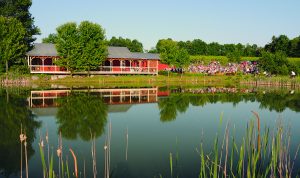 LINCOLN PEAK WINERY, NEW HAVEN
LINCOLN PEAK WINERY, NEW HAVEN
In 2006, Lincoln Peak Vineyards’ Chris and Michaela Granstrom made their first commercial wine. Now, with their daughter Sara, the Granstroms make 25,000 bottles a year, and the family’s vineyard is one of the largest grape producers in Vermont.
Three miles north of Middlebury, Lincoln Peak is set on 12 sprawling acres of grape vines that face the western sun, and its Friday night concert series attracts as many as 300 people on a Friday night. The tasting room, open on Saturdays and Sundays, offers $5 tastings, which come with a souvenir glass. | BE SURE TO TRY: Petite Pearl. lincolnpeakvineyard.com
SHELBURNE VINEYARD, SHELBURNE
After growing grapes in his backyard for decades, owner Ken Albert quit his day job at IBM and dedicated his life to the vineyard. Now, Shelburne Vineyards holds several gold medals from the International Cold-Climate Wine Competition.
The vineyard hosts a free concert series on Thursday nights, along with a monthly open–mic story hour series. The tasting room is open seven days a week, year-round with $7 tastings and tours of the vineyard are complimentary. Bonus: just across the street order wood-fired pizza from Folino’s and pick up a growler at Fiddlehead brewing’s tasting room. | BE SURE TO TRY: Marquette Untamed. shelburnevineyard.com
SNOW FARM, SOUTH HERO
David and Julie Lane opened Vermont’s first licensed winery, Snow Farm Vineyard, in 1996. Thirty miles south of the Canadian border on the shore of South Hero’s Crescent Bay, Snow Farm’s microclimate, created by the farm’s nearness to Lake Champlain, resembles that of Burgundy, France. Since opening, the Lane family has brought home medals from the Finger Lakes International Wine Competition, the Amenti Del Vino International Wine Competition and the Tasters Guild International Wine Judging.
On Friday evenings from June through August, Snow Farm hosts the Music in the Vineyard Concert Series. | BE SURE TO TRY: Seyval Blanc. snowfarm.com

